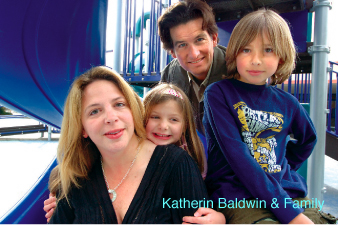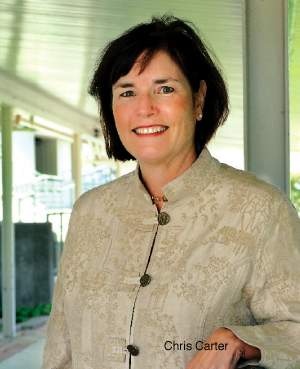As we all know, owning a small slice of the American dream in Marin requires an amount of money many people consider either shocking (if they’re trying to buy here) or laughable (if they’re loving their three-figure mortgage payment elsewhere in flyover country).
Chalk up much of that monster monthly bite to the cost of California living. The Golden State demands a premium for its attractions and we pay it. The price of admission for many cities in Marin, though, is even higher. Beyond the obvious reasons for this extra tariff—easy commute, great scenery and the general joie-de-vivre zeitgeist that permeates the Marin mindset—one factor stands out: The public schools in places like Mill Valley, Tiburon, Kentfield and Ross are great, as good as much ritzier private schools.
More simply, these local schools have the magnetism to entice an increasing number of families into buying some of Marin’s priciest real estate so they can gain access to an excellent—and free—public school education.
A million here, a million there
Not so long ago, seven digits to the right of a dollar sign meant real money. Having a “million bucks” meant being set for life. Millionaires were the richest of the rich.
Today, $1,000,000 is the new $1,000. Millionaires don’t rate on the Forbes 400 Richest Americans list. They’re all billionaires. Game shows give away millions like ATMs spit out twenties. Who Wants to Be a Millionaire? the TV show asks. The answer is everyone—especially anyone intent on living in parts of Marin.
How much house does a million dollars get you here? Here’s a recent example from the multiple listings on Ricardo Road in Strawberry priced at $1,195,000:
“Experience outdoor, resort style living at its best! Sunny, charming 3 bedroom 2.5 bath two-story home featuring hardwood floors. French doors from the living and dining room open on to the enticing patio, pool and fully fenced yard…Award winning Mill Valley schools and easy commute.”
Nice house, right? Sunny, a pool, add-ons—all good. But let’s face it: at 1,900 square feet with three bedrooms it’s a pretty standard suburban home not unlike this one advertised on Sereno Way in Novato:
“Great San Marin opportunity adjacent to Mt. Burdell on oversized corner lot! This home includes an updated kitchen, updated second story baths, newer roof, all new doors, fireplace in living room, solar heated swimming pool…and a great location next to open space!!!”
Same number of bedrooms and baths, same size and even more exclamation points. This house was selling for $825,000.
Why is Mill Valley worth $370,000 more than Novato? Two things—both noted in the first ad: “Award winning schools and easy commute.”
Well, of course, you say, it’s that real-estate location thing. And indeed that’s some of it. That’s why San Francisco workers will pay more for the shorter commute from Sausalito than for the longer one from Novato. (Highway 101 from Highway 37 to the Richmond Bridge exit is rated the fourth worst Bay Area commute.)
But there are plenty of close-in suburbs where houses are much cheaper. From Mill Valley, where the median home price is about $1 million, it’s 15 miles to San Francisco’s Financial District. From Millbrae, where the median home price is $750,000, it’s only a mile farther. The difference in value doesn’t take place on the freeway, but in the classroom.
Millbrae’s public schools test significantly lower than Mill Valley’s, which, like those in Tiburon, Ross and Kentfield, are among the highest rated in the Bay Area. Therein lies the trade-off for families in Marin—pay more now for a house, but save big money in the long run by not writing checks for private school tuition.
Private schools run from the merely expensive to better-have-a-money-manager-in-the-family. Elementary schools range from $7,900 for St. Hilary’s in Tiburon to $12,000 for Montessori de Terra Linda School in San Rafael to $22,900 for Marin Country Day in Corte Madera. High school is even more—from $13,600 at Marin Catholic in Kentfield to $29,000 at Branson in Ross or at Marin Academy in San Rafael.
A 13-year private school education—let’s say nine years at St. Hilary’s and four at Marin Academy—would set a family back $191,000 in today’s dollars. Multiply by two or three or four children and for many families public school starts to look like the better, or perhaps the only, option.
The financial gain of not paying that tuition can be substantial, even by the standards of well-off Marin, where the median family income is $99,713, almost twice the national average. That cash can be leveraged into a bigger house or more expensive neighborhood with better public schools.
Rob Lee, executive vice president of California Mortgage Advisors in San Rafael, crunches the numbers: a family who spends $20,000 a year on private school tuition could use that $1,600 a month to finance an additional $240,000 home loan. At $30,000 in tuition, the mortgage capacity grows by $400,000. That’s a lot more house—and a great investment considering that a Mill Valley home bought in 1996 for the median price of $425,000 has appreciated 158 percent, an average annual return of 13 percent.
From San Francisco, with love (and money)
Facing this kind of math, an increasing number of families with school-age children are moving to southern Marin, pushing up kindergarten enrollment in several high-scoring school districts. Many of these new Marinites are former San Franciscans.
Tom Dreyer, an agent in Pacific Union’s Greenbrae office, describes the demographic transition. “There’s a stream of young graduates coming out of local universities,” he says. “They end up living in the Marina or maybe Cole Valley, depending on how bohemian they want to be. Then they get married and they’re looking at children coming up.”
That’s when they become frustrated, either with San Francisco’s school lottery system or the city’s lack of kid-friendly housing.
“Say you have two kids of school age and you’re in the city,” says Dreyer. “Your options there are grim because of the school lottery. It would cost about $44,000 to keep them in private schools in San Francisco. That’s a sound argument to bite the bullet and pay more than you would in other communities for the better school district.”
Sometimes, says Dreyer, he’ll see “a dozen or more of these young couples” at open houses, especially in places such as Sycamore Park in Mill Valley, Belveron in Tiburon and McAlister Avenue in Kentfield. Beyond the good schools, these neighborhoods meet the family checklist: flat streets (for strollers), big backyards (not vertigo-inducing decks) and walk-to parks (for playdates).
Payton Stiewe, an agent with Sotheby’s International Real Estate in San Francisco, sees a direct link between the city’s school lottery and demand for Marin housing. “In March,” he says, “when the letters were mailed out to the parents in San Francisco about the school they applied to—whether they got accepted or not—that weekend we got a huge spike in people looking in Marin for houses.”
Moreover, says Stiewe, who lives in Mill Valley, family buyers just can’t find what they need in San Francisco. On the lower end, he says, “for a million you don’t get anything anymore in the city that is decent.” On the higher end, “it’s really, really hard to find a home in San Francisco that can accommodate three kids, having four bedrooms on one level.”
Molly Williams once covered Silicon Valley for the Wall Street Journal and now is a full-time Mill Valley mom of four. She and her husband, Steve Sell, a health care executive who also sits on the Mill Valley school board, are poster parents for the San-Francisco-in-my-rearview movement.
“We were living in the city in ’98 and ’99 and started looking at the financials of buying a house,” says Williams. “The question was, if you buy a house in the city are you going to pay for private schools vs. going to a better school district where you pay a premium?”
Sell, who ran unopposed for his four-year, unpaid school board position in 2005, picks up the story: “We were a pretty typical case study. Our daughter was two. We were pregnant with our first son (two more followed). Mill Valley had this great combination of proximity to the city and strong, local neighborhood schools. It really has this small- town community feeling.”
Katheryn Baldwin made a similar journey, although entirely within Marin County. In 2002, Baldwin and her husband, who runs a media production services company, were living in Novato with their two children. They wanted to move south and school quality was critical. Their son was attending preschool at Marin Primary in Larkspur, where annual tuition hovers around $20,000.
Baldwin first looked at test scores, then houses. She found a place she loved in San Rafael. “The house was larger, new, had a pool and all sorts of great things,” she says. She thought the address was in “a decent school district—not the top but they do pretty well.” But, says Baldwin, “when I found it was in a different district, I dumped the house immediately.”
Baldwin finally settled in Greenbrae, about two blocks from the Kentfield border, close enough for her son and daughter to attend Bacich Elementary School in the highly rated Kentfield district.
Coincidentally, Baldwin ended up working for the district. As director of development she helps the all-volunteer Kentfield Schools Foundation raise money to plug gaps in school funding. Last year, the foundation contributed more than $1 million, 10 percent of the budget.
What makes local schools so good
When parents and administrators explain why the schools in Kentfield, Tiburon, Mill Valley and similar towns are so good, almost uniformly their top two reasons are parental involvement and community financial support.
The latter is exhibited in the millions of dollars given each year by parents and nonparents alike to the many nonprofit Marin school foundations formed in the wake of the 1978 property-tax-slashing initiative Proposition 13, which gutted public school funding. This money pays for arts, music and other nonacademic education that administrators say would likely not be possible without it.
 Perhaps the best known of these foundations is Kiddo!, made famous as much by its seemingly ubiquitous bright red exclamation point as its funding for 100 percent of the arts programs in Mill Valley’s six public schools (see story, page 36).
Perhaps the best known of these foundations is Kiddo!, made famous as much by its seemingly ubiquitous bright red exclamation point as its funding for 100 percent of the arts programs in Mill Valley’s six public schools (see story, page 36).
RoseAnn Frank, a former Wall Street vice president who now lives in Strawberry, with one son at Tam High and another at Mill Valley Middle School, cochairs Kiddo!’s annual fundraising campaign.
Frank says the money from Kiddo! makes the Mill Valley schools less one-dimensional than schools—like the one her sons attended in Manhattan Beach — that focus almost exclusively on testing. When she moved to Marin four years ago, she says, “I called the school district and I liked the foundation’s focus on the arts. I did want good test scores because I am academically oriented, but I love the arts. Mill Valley is more well-rounded. I have two kids who are kind of different and they needed both.”
Mimi Ogden, the outgoing PTA president at the Reed Union School District in Tiburon and Belvedere, says that when she, her husband and their two children moved to Marin in 1998 from Chicago, they “specifically purchased in Tiburon for the schools.”
Besides high test scores she was also drawn to the cultural and Spanish language classes in Reed Union’s three schools, supported by the Foundation for Reed Schools.
“All schools should have art and music and PE and all those things that were taken away,” Ogden says. “Unfortunately, they don’t. It was really important to my husband and me that our children were in a school that had those. We figured that depending on where we moved, we could either pay for it in the house or we could pay for it in private schooling.”
Parents are a prime source of funding for the foundations, although donations are not mandatory. The Foundation for Reed Schools tells parents it provides $1,100 worth of additional education per child and “suggests” a contribution of that amount. Kiddo! asks for $600 per student; the Kentfield Schools Foundation seeks $825. All are a bargain compared to private school tuition.
Broader community support for local schools is evident on every Marin County property tax bill. Voters from Nicasio to Mill Valley have approved more than half a billion dollars in education bonds since 1994 (plus $250 million more for the College of Marin). In addition, nearly every local city has a flat parcel tax targeted for schools. This means, for example, that the owner of the median-priced $1 million home in Mill Valley pays at least $1,200 more a year in taxes dedicated to schools.
That type of self-taxation indicates a high level of grassroots support for schools, says Ogden. “That doesn’t happen everywhere,” she adds. “It’s a critical part of a successful community and this community understands that.”
The local schools would not be the same without this money, says Chris Carter, superintendent of Reed Union.
“We have funding to run our schools because we have a parcel tax and we have a foundation,” Carter says. “We have small class sizes because of that parcel tax. And with the foundation monies we can do all of things that every child deserves, which is the arts, the music, the physical education and our technology programs (which provides a laptop for all middle-schoolers).”
Carter, who has overseen a voter-funded, five-year modernization of Reed’s facilities, says community funding helps the district attract experienced, high-quality teachers.
“We have great teachers. And we pay for that,” she says. The average teacher earns $72,000 at Reed compared to the California average of about $58,000. Reed pays teachers for up to 15 years of experience, double the norm, which means good teachers can go there and get a raise. “If you work in another district and you’re excelling at what you’re doing, we say we want you in our district,” Carter says.
The Mill Valley School District also pays teachers better than average, hiring typically at $62,000. Superintendent Ken Benny believes that if you “put a good teacher in a classroom teaching kids you’re about 80 percent of the way there.”
Money does matter, says Benny. Without Kiddo!, for example, “we would be hard-pressed to offer an arts program regardless of how affluent Marin is or is perceived to be.”
But the root of Mill Valley’s success is deeper, he says. “In this community, there is a real culture of support for children in general—and I don’t just mean through the school district. The community is very family friendly and very child friendly. That’s an important factor that we sometimes take for granted.”
Mill Valley and Reed Union schools are facing a challenge brought on by their academic records and the “family friendly” nature of their cities—climbing enrollment.
In Mill Valley, the number of students will rise by about 100 next year to more than 2,400, with new kindergartners comprising half the increase. In three years, enrollment will have grown about 10 percent, a “double-edged sword,” says Benny, that on one side signifies achievement and on the other points to, as he noted in his annual message to parents, “a $500,000 operating deficit.”
Reed Union’s kindergarten enrollment is also growing, says Carter, and the district expects to add another class.
Carter has a theory to explain the expanding numbers: the Internet. “People are searching for the best school districts, people who have the resources to live wherever they want to live,” she says. “For many families, education is the great equalizer. They want the best. They get on the Internet and search.”
An online search for test scores often leads to Great Schools, a San Francisco company that compiles test results, funding figures and other educational data such as how many first-year (meaning inexperienced) teachers work at a school.
Linda Strean, managing editor of Great Schools, says parents usually look for a new school because they are moving. “We get a lot of our visitors because they simply type the name of the school and Google it,” she says. Parents can then compare schools or entire districts.
The most commonly cited score—online or off—is the Academic Performance Index, or API, a figure created by the state of California to make the confusing myriad of test scores more understandable to parents. The index runs from 200 to 1,000, with 800 being the state’s lowest acceptable performance level. Nearly all Marin schools rate above 800, with most in the better schools districts higher than 900.
While scores are a key indicator, Strean urges parents to go beyond the numbers. “Some people think that’s the only thing they should look at,” she says. “We really try to say that that’s just one aspect of a school.” Equally key are “the kind of things you can only really look at by visiting the school,” like classroom atmosphere, playground quality and behavior of other students.
“It’s really important to not just be wowed by the reputation of the school,” says Strean. “It’s a lot about how your child is going to feel in that school environment and unless you visit you’re not going to know that.”
Benny, too, says test scores, while valid indicators, don’t by themselves provide a true measure of a school’s worth. That parents know this becomes clear when they call him to check out the Mill Valley schools.
“Many will call at first because they have read about the test scores,” says Benny. “But the conversation quickly gets much broader and deeper and turns to ‘tell me about your music, tell me about your art program, tell me about what kinds of advance courses you offer.’”
Rigorous individual standards are necessary, says Benny, but “my ultimate measurement for a K-12 school system is what a kid knows and is able to do when he or she leaves 12th grade.”
 THE FAMILIES: Good public schools draw families to southern Marin. Katheryn Baldwin moved to Greenbrae from Novato; Molly Williams crossed the bridge from San Francisco to Mill Valley; and RoseAnn Frank moved north from Manhattan Beach to Mill Valley.
THE FAMILIES: Good public schools draw families to southern Marin. Katheryn Baldwin moved to Greenbrae from Novato; Molly Williams crossed the bridge from San Francisco to Mill Valley; and RoseAnn Frank moved north from Manhattan Beach to Mill Valley. 

THE SUPERINTENDENT: Chris Carter of Reed Union School District says that “for many families, education is the great equalizer. They want the best.”


